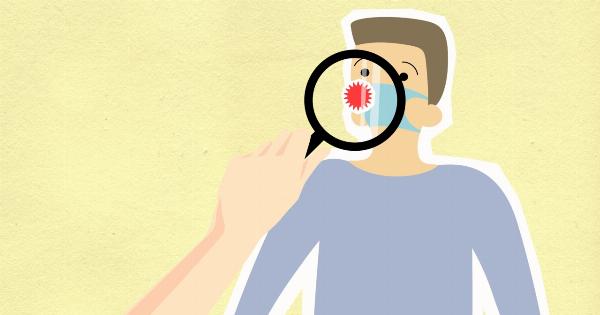Fall is a beautiful season with crisp weather and colorful foliage. However, it also marks the beginning of the cold and flu season which can be dangerous for everyone, especially children.
Children have a weaker immune system compared to adults, which makes them more susceptible to fall illnesses. Childhood illnesses such as colds, flu, and respiratory infections can lead to serious complications in children. This article will discuss the various fall illnesses that are more dangerous for children and how to keep them healthy during fall.
Cold and Flu
Cold and flu are two of the most common illnesses that affect children in fall. They are caused by viruses that spread through the air when an infected person coughs, sneezes, or talks.
Children are more susceptible to these illnesses because their immune systems are still developing and they are more likely to touch their faces or put their hands in their mouths, which can spread the virus.
The symptoms of cold and flu in children include fever, cough, runny nose, sore throat, body aches, and fatigue. While these symptoms may seem mild, they can lead to severe complications in children, especially those with weakened immune systems.
Some of the complications of cold and flu in children include ear infections, pneumonia, and dehydration. Children under the age of five, especially those under two years old, are at a higher risk of developing these complications.
To prevent cold and flu in children, it is essential to teach them good hand hygiene practices. Encourage children to wash their hands with soap and water frequently and avoid touching their face.
Additionally, make sure that your child is up-to-date on their flu vaccine. The flu vaccine can reduce the severity of the illness and prevent complications in children.
Respiratory Infections
Respiratory infections such as bronchitis and pneumonia can also be dangerous for children in fall. These infections are caused by bacteria or viruses that affect the lungs and respiratory system.
Children are more susceptible to these infections because their airways are smaller, and their immune systems are still developing.
The symptoms of respiratory infections in children include cough, wheezing, shortness of breath, fever, and chest pain. These infections can quickly become severe, especially in children with weakened immune systems.
Pneumonia, in particular, can lead to hospitalization and even death in children.
To prevent respiratory infections in children, it is essential to teach them good hygiene practices and avoid exposing them to secondhand smoke and air pollution. Additionally, make sure that your child receives their pneumococcal vaccine.
This vaccine can protect against the most common bacteria that cause pneumonia.
Gastrointestinal Illnesses
Gastrointestinal illnesses, such as norovirus and rotavirus, are also prevalent in fall.
These illnesses are caused by viruses that affect the digestive system and can spread through contaminated food or water, or by close contact with an infected person.
The symptoms of gastrointestinal illnesses in children include diarrhea, vomiting, abdominal pain, and fever. These illnesses can quickly lead to dehydration, especially in young children.
Dehydration can be dangerous for children, so it is essential to monitor them closely and ensure that they are drinking plenty of fluids.
To prevent gastrointestinal illnesses in children, it is essential to practice good food hygiene and avoid exposing them to contaminated food or water.
Additionally, encourage children to wash their hands frequently and avoid sharing utensils or drinks with others.
Asthma
Asthma is a chronic respiratory condition that can be exacerbated by fall allergies and illnesses. Asthma is caused by inflammation and narrowing of the airways which can make it difficult to breathe.
Fall allergies, such as ragweed and mold, can trigger asthma symptoms in children.
The symptoms of asthma in children include coughing, wheezing, shortness of breath, and chest tightness. These symptoms can be severe and can lead to hospitalization if left untreated.
Children with asthma should have an asthma action plan in place and should receive their annual flu vaccine to prevent exacerbations.
To prevent asthma exacerbations in children, it is essential to avoid exposure to allergens and irritants. Children with asthma should avoid smoke, air pollution, and other triggers that can worsen their symptoms.
Additionally, make sure that your child is taking their asthma medications as prescribed and has an up-to-date asthma action plan.
Allergies
Fall allergies can also be dangerous for children, especially those with asthma. Allergies are caused by the body’s immune system reacting to allergens such as pollen, mold, and dust mites.
These allergens can trigger asthma symptoms in children and cause allergic reactions such as hives and swelling.
The symptoms of fall allergies in children include sneezing, runny nose, itchy eyes, and coughing. These symptoms can be severe and can lead to asthma exacerbations in children with asthma.
Allergy testing can help determine which allergens are causing your child’s symptoms, and allergy shots can reduce the severity of allergy symptoms over time.
To prevent fall allergies in children, it is essential to avoid exposure to allergens such as pollen and mold. Keep windows and doors closed during peak allergy seasons and use air filters to remove allergens from the air.
Additionally, make sure that your child is taking their allergy medications as prescribed and has an up-to-date allergy action plan.
Conclusion
Children are more susceptible to fall illnesses due to their weaker immune systems. It is essential to take precautions to prevent fall illnesses in children and monitor their symptoms closely.
Good hand hygiene, vaccination, and avoiding exposure to allergens and irritants can all help keep children healthy during fall. If your child has symptoms of a fall illness, it is important to seek medical attention promptly to prevent complications.





























